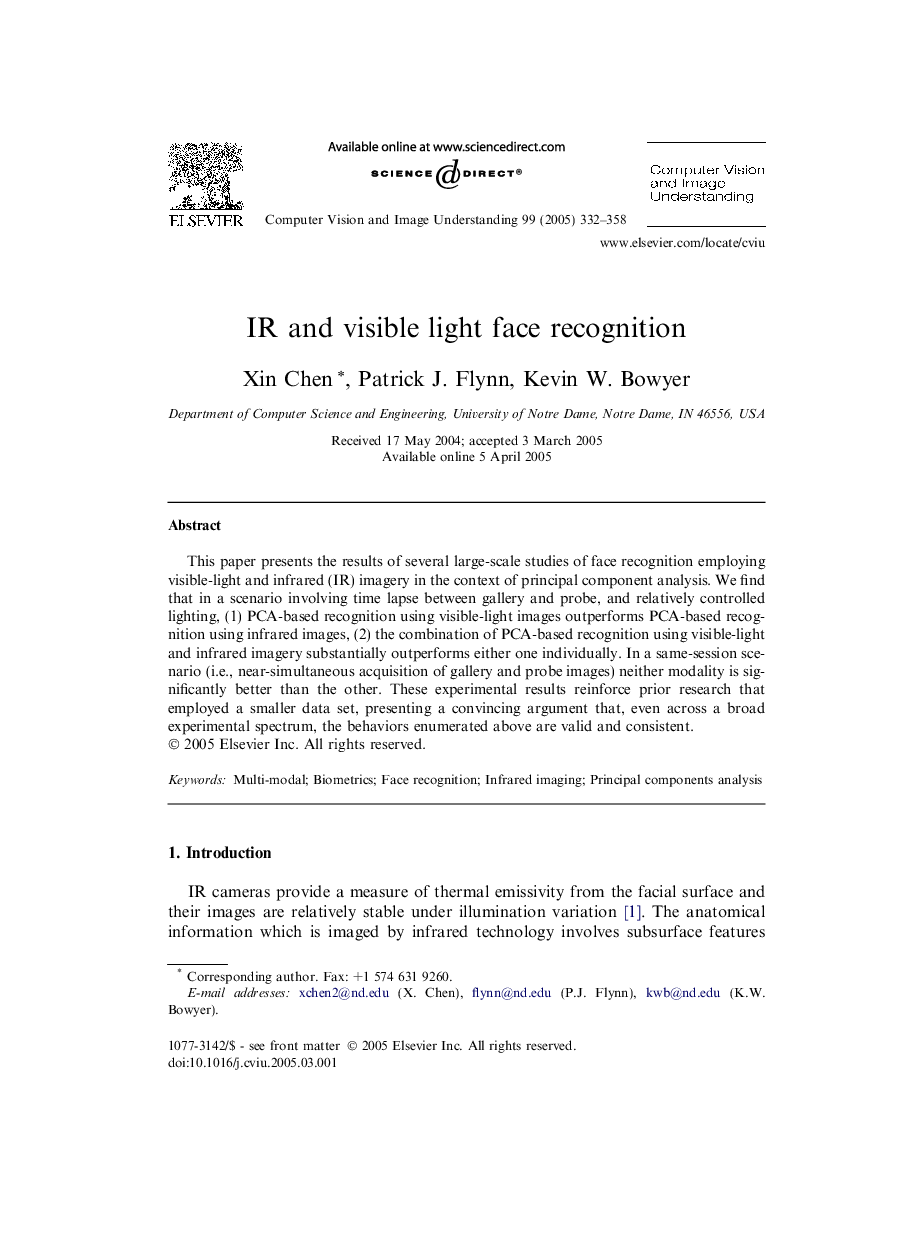| Article ID | Journal | Published Year | Pages | File Type |
|---|---|---|---|---|
| 10359190 | Computer Vision and Image Understanding | 2005 | 27 Pages |
Abstract
This paper presents the results of several large-scale studies of face recognition employing visible-light and infrared (IR) imagery in the context of principal component analysis. We find that in a scenario involving time lapse between gallery and probe, and relatively controlled lighting, (1) PCA-based recognition using visible-light images outperforms PCA-based recognition using infrared images, (2) the combination of PCA-based recognition using visible-light and infrared imagery substantially outperforms either one individually. In a same-session scenario (i.e., near-simultaneous acquisition of gallery and probe images) neither modality is significantly better than the other. These experimental results reinforce prior research that employed a smaller data set, presenting a convincing argument that, even across a broad experimental spectrum, the behaviors enumerated above are valid and consistent.
Related Topics
Physical Sciences and Engineering
Computer Science
Computer Vision and Pattern Recognition
Authors
Xin Chen, Patrick J. Flynn, Kevin W. Bowyer,
